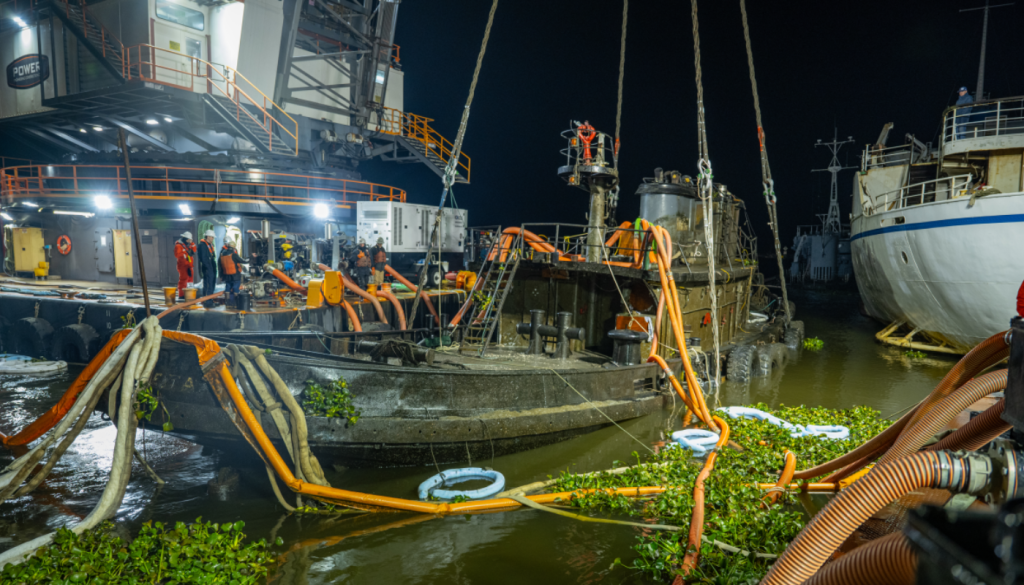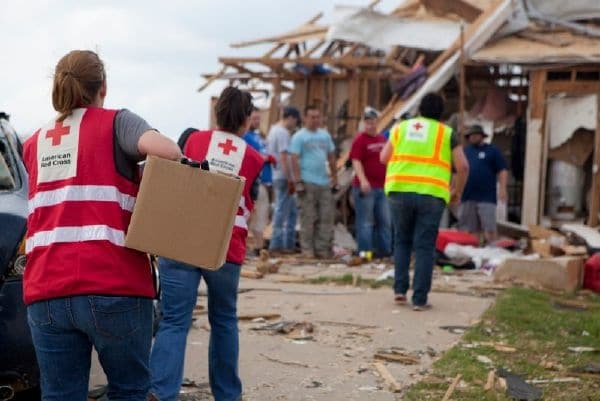Releases in waterways can arise wherever there is a dock, port or boat traffic. The problems caused by a release are two-fold: first, there is the immediate impact on the area where the release occurred and second, longer-term consequences for sensitive areas and water supply systems nearby and downgradient from the release.
In this post, we look at releases to marine waterways caused by the sinking of two historic ships, how the surrounding areas were affected, the methods of cleanup employed to remediate the incident and costs.
Impacts to Waterways Caused by Sinking Vessels
When a vessel sinks in a waterway, motor oil and diesel fuel from the ship’s engine are discharges into the water. The impact will spread, driven by the current to sensitive areas, including vegetation, wetlands and municipal water supplies that are typically located alongside the waterways. If the impact is not quickly addressed, surrounding ecological areas will be affected and there is real potential that the local municipal water system will be shutdown.
One recent project that highlights the widespread impacts of a sunken vessel was that of the Mazapeta, a 94-foot, steel-hulled World War II era tugboat. While being restored by local volunteers, it suddenly sank alongside the dock where two other historical ships were moored. When it sank, it discharged nearly 1,600 gallons of motor oil and diesel fuel into the waterway. Nearby vegetation was affected and had to be removed. Located less than one mile south and downgradient of the release, the raw water supply and water treatment plant that serves approximately 200,000 customers in the city daily, had to be shut down. Until the remediation was complete, the city spent approximately $50,000 a week to have raw water supplies provided to keep up the water service to that portion of the city.

Who Do You Call?
If an anchored ship has sunk, who is in charge of the recovery and cleanup, especially if the ownership of the ship cannot be determined? If the waterway is located along the U.S. coastline to 200 miles inland from the shore, as well as rivers and the Great Lakes, then the United States Coast Guard will be the main lead to oversee all remediation and recovery operations. Under Federal law (the Oil Pollution Act and the Clean Water Act), it is illegal to discharge any amount of fuel, oil or other petroleum product into the waters of the United States. By law, any oil or fuel spill that leaves a sheen on the water must be reported to the U.S. Coast Guard National Response Center. Depending on the location of the release, additional state and county agencies will be involved in the cleanup operations.
In the case of the Mazapeta, located approximately 65 miles inland from the coast of San Francisco, the Coast Guard was notified immediately after the San Joaquin County Sheriff’s Office was called to the incident. The Coast Guard could not identify the owner of the tugboat, so it assumed responsibility and acted as the main oversight agency, working in coordination with sheriff’s office and the California Department of Fish and Wildlife Oil Spill Prevention and Response division, throughout the recovery and cleanup operations.
Remediation Methods Employed for Releases to Waterways
When a boat sinks in the waterway, the agency overseeing the cleanup will, depending on the type of release, deploy booms (floating barriers) to prevent the migration of the release from the incident site and/or a type of sorbent, and skimmers to remove any impact.
In the case of the Mazapeta, the Coast Guard had the county sheriff’s department and a local boat salvage agency immediately deploy booms around the incident site. The Coast Guard had the impacted vegetation around the incident site removed and coordinated the operations to recover the Mazapeta. They decided on the use of a crane and dewatering pumps to bring it up, and while waiting on the crane to arrive they deployed a rubberizer boom, which turns petroleum hydrocarbons into a rubber-like solid on contact in order to mitigate the impact in the incident site.When recovered, the Mazapeta’s hull was compromised to the extent that the boat had to be scrapped. The entire cleanup and recovery process took approximately six months.
Just months after the Mazapeta sank, the Aurora, a 300-foot vintage cruise ship that had been anchored next to the Mazapeta, started sinking. Booms to prevent migration were immediately deployed and an estimated 15,000 gallons of water-oil mixture were removed from the waterway, along with household hazardous waste and debris. Once again, the municipal raw water supply and water treatment plant shut down and the city had to spend approximately $50,000 a week to have raw water supplies brought in to prevent the interruption of service. The cleanup for the Aurora was minimal and remediation was complete within four days of the release.
Releases to Waterways: The Cost
The cost of the cleanup would normally fall to the owner of the boat and their insurance. In the case of the Mazapeta, the owners could not be identified, so responsibility fell mostly to the city closest to the incident site. Including the costs of bringing in clean raw water, and the recovery, removal and dismantling of the Mazapeta, and water monitoring of the incident site, the approximate costs totaled $920,000.
The owner of the Aurora is still under investigation, and total costs incurred are pending at this time.
How VERTEX Supports Waterway Release Claims
Releases into waterways caused by sinking vessels can have severe environmental and financial repercussions, as demonstrated by the cases of the Mazapeta and Aurora. Proper containment, cleanup, and recovery are critical to mitigate the immediate and long-term impacts on sensitive areas and municipal water supplies. At VERTEX, we offer expert environmental claims consulting services to support clients in navigating the complexities of these incidents. From investigating the cause and origin to managing the claim and ensuring timely and cost-effective remediation, VERTEX’s technical expertise in environmental, engineering, and construction ensures that claims are handled efficiently and thoroughly. Whether it’s pollution claims, industrial hygiene, natural resource damage assessments, or building sciences claims, VERTEX provides comprehensive solutions to protect your business and bring closure to even the most challenging cases. For more information on how we can assist with environmental claims related to sunken vessels, please contact Michelle Nagy, or call 888.298.5162 or submit an inquiry.



